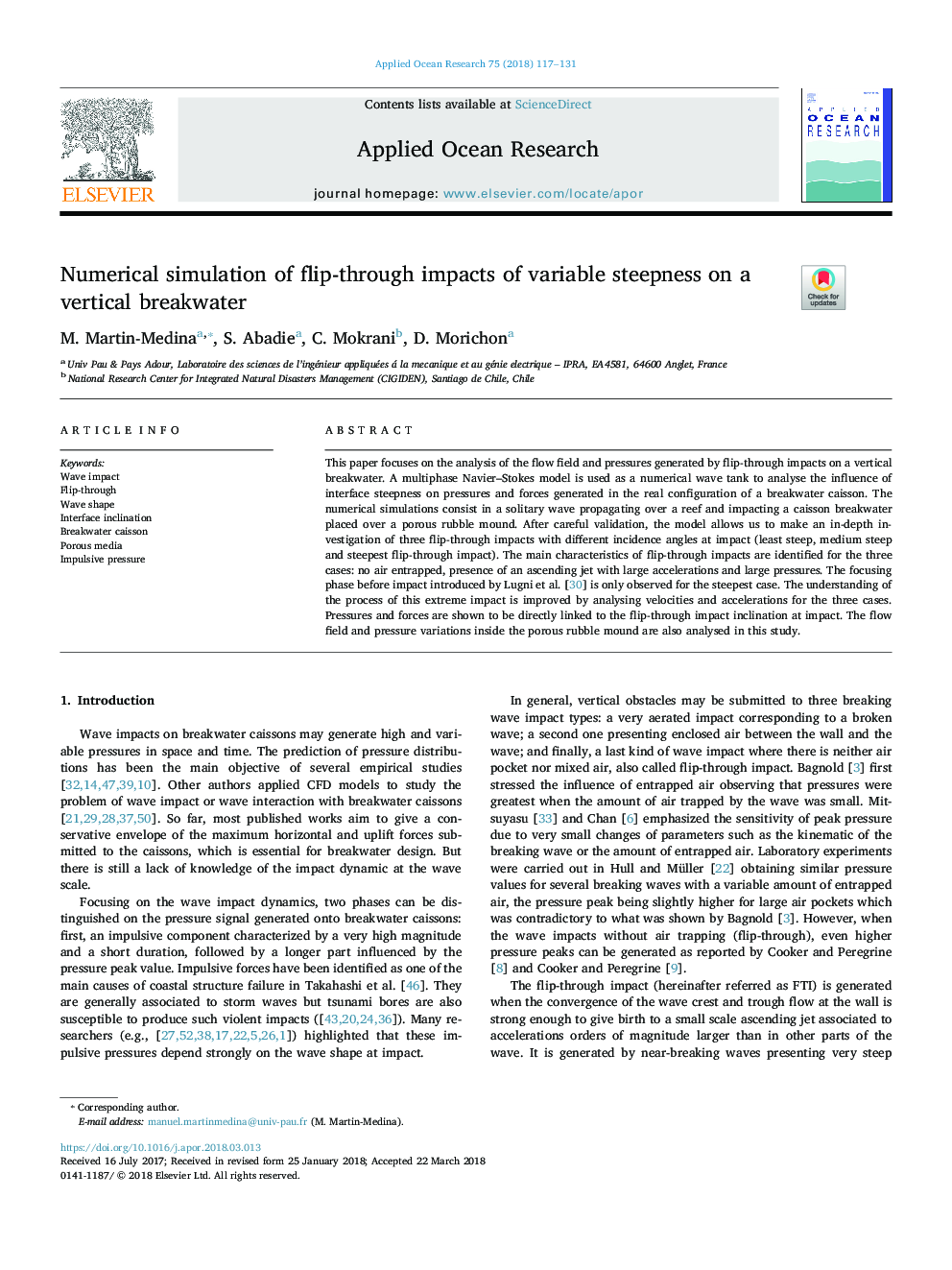| Article ID | Journal | Published Year | Pages | File Type |
|---|---|---|---|---|
| 8059264 | Applied Ocean Research | 2018 | 15 Pages |
Abstract
This paper focuses on the analysis of the flow field and pressures generated by flip-through impacts on a vertical breakwater. A multiphase Navier-Stokes model is used as a numerical wave tank to analyse the influence of interface steepness on pressures and forces generated in the real configuration of a breakwater caisson. The numerical simulations consist in a solitary wave propagating over a reef and impacting a caisson breakwater placed over a porous rubble mound. After careful validation, the model allows us to make an in-depth investigation of three flip-through impacts with different incidence angles at impact (least steep, medium steep and steepest flip-through impact). The main characteristics of flip-through impacts are identified for the three cases: no air entrapped, presence of an ascending jet with large accelerations and large pressures. The focusing phase before impact introduced by Lugni et al. [30] is only observed for the steepest case. The understanding of the process of this extreme impact is improved by analysing velocities and accelerations for the three cases. Pressures and forces are shown to be directly linked to the flip-through impact inclination at impact. The flow field and pressure variations inside the porous rubble mound are also analysed in this study.
Keywords
Related Topics
Physical Sciences and Engineering
Engineering
Ocean Engineering
Authors
M. Martin-Medina, S. Abadie, C. Mokrani, D. Morichon,
